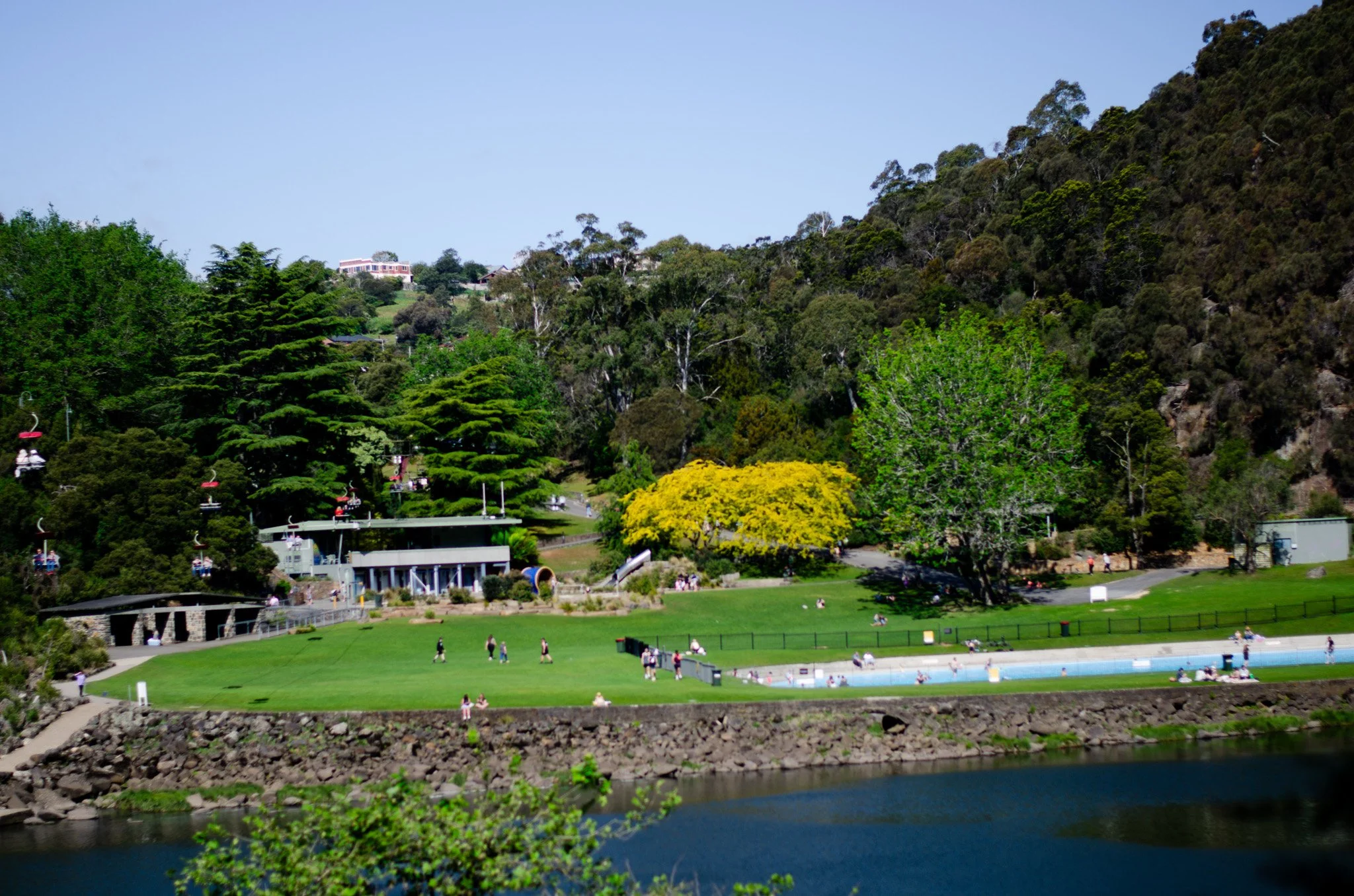Tasmania Trip - Part 1
Returning to the Apple Isle: A Journey Through Time and Nature
Tasmania — that remote, windswept jewel off Australia’s southern edge — is often called the “Apple Isle,” a nostalgic nod to the days when orchards covered its hills and valleys. While the apples may have faded into the background, Tasmania today is a haven for lovers of fine food, bold wines, and landscapes so dramatic they seem sculpted by the gods.
This was not our first time on the island. Our first visit was nearly three decades ago, when we arrived as newlyweds chasing romance and wilderness. Now, 27 years later, we were returning — older, perhaps wiser, and eager to see what had changed, and what time had left untouched.
A quick flight of just over an hour from Melbourne brought us into Launceston, nestled in Tasmania’s north. While flying was convenient, there was a whisper of longing in me for another way — the Spirit of Tasmania, a ferry that journeys across the Bass Strait from Geelong to Devonport. I’ve never crossed the sea on a ferry before, and something about the idea — wind in my face, sea spray on the rails — has always stirred a quiet curiosity. Perhaps next time.
Tasmania isn’t a place you can see from a single window or one perch. The island’s treasures are scattered across its contours — coasts, highlands, forests — so driving is essential. We picked up a rental car at Launceston Airport and planned a loop that would eventually bring us full circle. Our base was a centrally located hotel in Launceston’s historic heart. I had briefly flirted with the idea of booking an Airbnb, but the hotel, with its proximity and convenience, ultimately won us over — a decision we’d echo later in Hobart.
Our first stop, even before truly unpacking, was Cataract Gorge — a place that feels like nature’s hidden amphitheatre, carved over millions of years by the relentless South Esk River. It’s astonishingly close to the city centre — a place where urban life gives way, almost abruptly, to wild escarpments and deep, leafy silence.
As we descended into the gorge from the car park, the air turned cool and earthy. Towering trees — some likely over a century old — stood like sentinels. A spacious lawn opened before us, surprisingly punctuated by a public swimming pool, and behind it, the Kings Bridge, standing firm since 1867. Overhead, the chairlift drifted silently through the sky, stretching an impressive 308 metres — the world’s longest single-span of its kind.
To walk here is to follow in ancient footsteps — the gorge is estimated to be 65 million years old. When William Collins, an early European explorer, first saw it, he was moved to write, “The beauty of the scene is probably not surpassed in the world.” And standing there, surrounded by gardens blooming in spring brilliance and the occasional proud peacock strutting by, it was hard to disagree.
We followed one of the scenic walking tracks, breathing in the mingling scents of native eucalyptus and rhododendron blooms. When we reached the suspension bridge, its gentle sway beneath our feet was both thrilling and humbling — a reminder of nature’s power and the human desire to feel it up close.
Later, we attempted another trail, only to find it unexpectedly closed for maintenance. There was no sign to warn us earlier, which was frustrating, but it barely dimmed the magic of the experience. The gorge had already etched itself into our hearts.
As the sun began to dip below the hills, we sought a quiet place to witness the closing of day. A short 15-minute drive brought us to Brady’s Lookout, a name whispered in local folklore, and once the hideout of a bushranger. Today, it’s a serene overlook above the Tamar River — manicured paths, BBQ pits, and a stone platform offering panoramic views. We stood in silence as the sky unfolded into layers of dusky gold and bruised purple. There are sunsets that demand applause, and then there are those that command reverence. This was the latter.
Night fell, and hunger soon followed. I had my heart set on a charming Italian spot, but it was closed — as were several others. Launceston, it turns out, winds down early on Sundays. After a bit of wandering, we found a Mexican restaurant still open — a humble place that turned out to be a hidden gem. We ordered without restraint: smoky pork ribs, sizzling prawns, and traditional plates brimming with flavor. The portions were almost comically generous. I ate more than I should have — a decision I would come to regret in the early hours of the morning, grappling with heartburn as a penance for my gluttony.
We ended our first day back on Tasmanian soil the way all good travel days end — full, tired, and content. There’s something deeply grounding about returning to a place after so many years. The roads may twist the same way, the rivers still flow, the trees still stand — but you, the traveler, are never quite the same.
And so, with the hum of the city settling into silence, we turned in for the night, eager for what tomorrow would unveil on this ancient and beloved isle.









